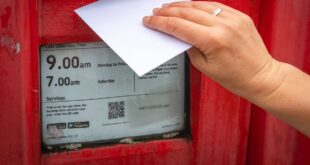The van has been deployed at Manchester Mail Centre, adding to 15 others already at the site used for deliveries and collections.
So far, over 240 Royal Mail offices across the country use electric vehicles. Royal Mail purchased its first 100 electric vehicles in December 2017, which were deployed in delivery offices across the UK.
Most are charged on-site across Royal Mail’s estate via a purchased 100% renewable electricity supply.
Alistair Cochrane, Royal Mail chief operating officer, said: “It’s so exciting to hit this major milestone just as we enter 2025.
“Electric vehicles are an essential part of our plan to be net zero by 2040 and offer so many benefits for both our staff and customers.
“Our zero-emission vehicles make our deliveries greener, reducing noise and air pollution in local communities.”
In July, Royal Mail announced it was adding another 2,100 electric vans to its fleet over the next year as part of the company’s overall annual vehicle replacement plan and to help achieve net-zero carbon emissions by 2040.
It already has the largest electric delivery fleet in the UK, and the additions will increase the electric fleet to 7,100 vans.
When all the new vans are in use, they are expected to reduce Royal Mail’s total emissions by around 6,000 tonnes of carbon dioxide equivalent per year.
The electrification of delivery vans is a major part of Royal Mail’s strategy to lower emissions from its vehicles.
Royal Mail has also introduced hydrotreated vegetable oil (HVO) to fuel many of its heavy goods vehicle fleet, which is a renewable alternative to diesel that produces up to 90% less direct carbon emissions compared to diesel.
Royal Mail said it has the lowest reported carbon emissions per parcel of any UK delivery company, adding that it aims to maintain this position in the long term.
The company’s Steps to Zero environment strategy set a goal of achieving net zero by 2040.
The company has already reduced Scope 1 and 2 emissions by 18% in four years, with a target to achieve a 50% reduction by 2030.
Source link


